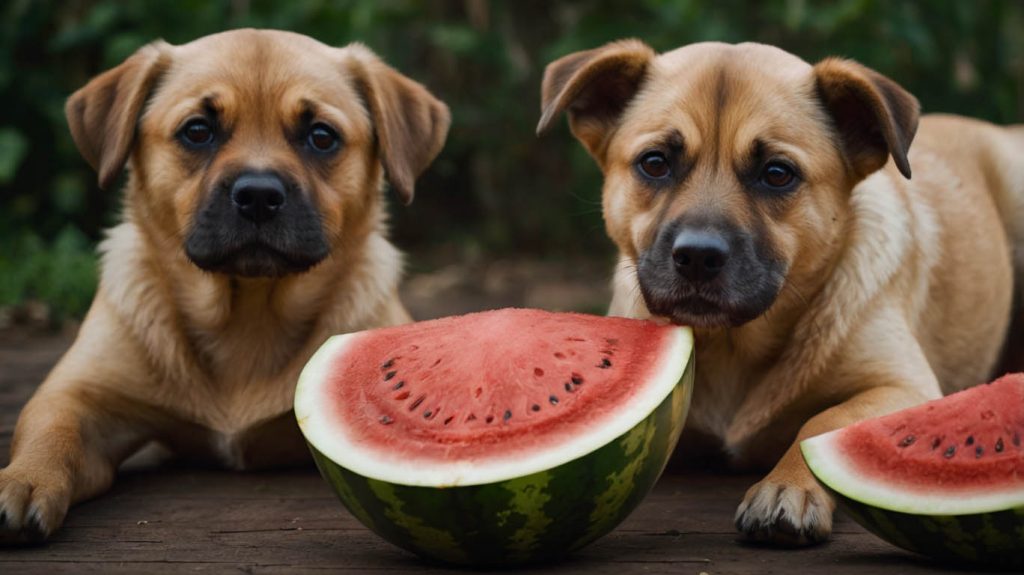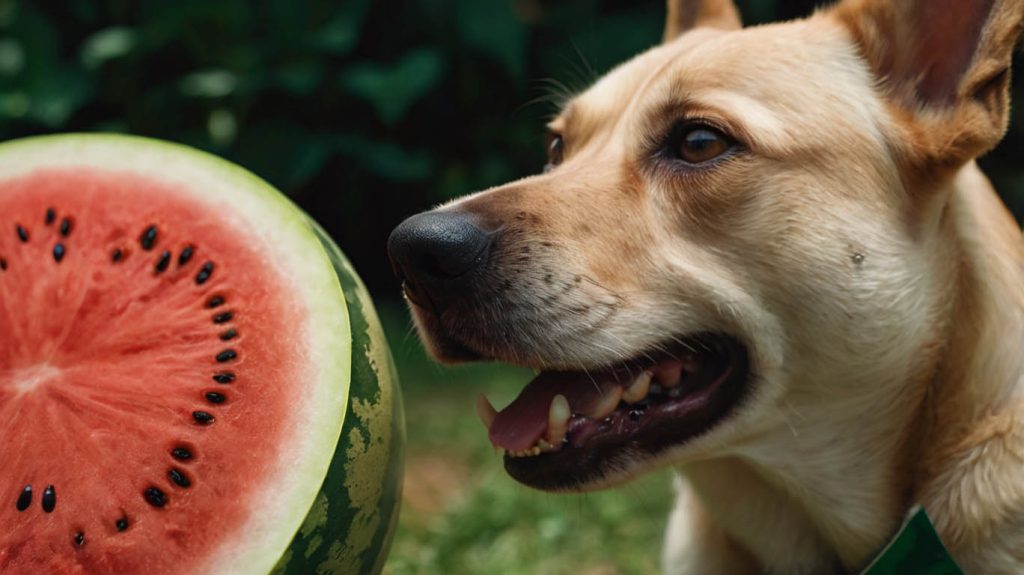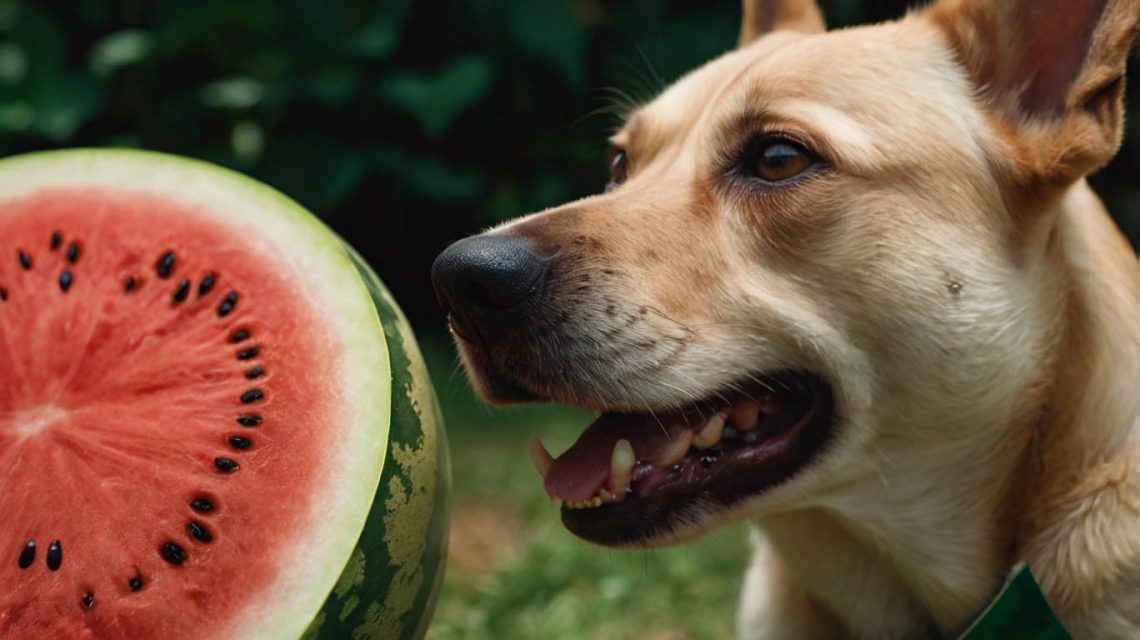Can Dogs Eat the Rind of a Watermelon? An Essential Safety Guide
You’ve just finished enjoying a refreshing slice of watermelon on a warm day, and you’re left with the thick, green rind. Your dog, who has been patiently waiting for a handout, looks at the rind with intense interest. It might seem like a natural, crunchy chew toy, prompting you to wonder, “Can dogs eat the rind of a watermelon?” Before you toss that scrap to your furry friend, it’s absolutely crucial to know the answer. While the fruit’s sweet, pink flesh is a safe treat, the rind is a completely different story, one that is filled with potential dangers.
This in-depth guide will walk you through the entire narrative of why the watermelon rind is unsafe for your dog. We will begin by giving a direct and unequivocal answer to this common question. Subsequently, we will explore the serious health risks associated with the rind, from digestive upset to life-threatening emergencies. Furthermore, we will outline exactly what to do if your dog accidentally consumes some. Consequently, you will be fully equipped with the knowledge to protect your pet and make safe, informed decisions about their treats.
The Clear Answer: Can Dogs Eat the Rind of a Watermelon?
Let’s not bury the lead: No, dogs cannot eat the rind of a watermelon. Veterinarians and pet health experts are united on this point. The rind is not toxic in the chemical sense, like chocolate or xylitol. Instead, the danger comes from its physical properties. It is tough, fibrous, and incredibly difficult for a dog’s digestive system to break down, which sets the stage for several serious health problems. Understanding this fundamental point is the first step in comprehending why you should never offer it as a treat.

The Top Reasons Why Dogs Cannot Eat the Rind of a Watermelon
When a dog chews on or swallows a piece of watermelon rind, they are exposed to a cascade of potential risks. These dangers are not theoretical; they are real-world emergencies that veterinarians see in their clinics.
1. Severe Gastrointestinal Distress
The most immediate and common issue is digestive upset. A dog’s stomach is simply not equipped to handle such a hard, fibrous material. Ingesting the rind can easily lead to:
- Vomiting
- Painful gas and bloating
- Diarrhea
- General abdominal discomfort
While this may resolve on its own, it is an unpleasant experience for your dog and can lead to dehydration if symptoms are severe. This is the mildest reason why the answer to can dogs eat the rind of a watermelon is no.
2. The High Risk of Choking
The watermelon rind’s tough, rubbery texture makes it a significant choking hazard. An eager dog might try to swallow a large piece without chewing it thoroughly. This piece can then become lodged in their throat or esophagus, obstructing their airway. A choking dog is a terrifying and life-threatening situation that requires immediate action, such as the canine Heimlich maneuver, and an emergency trip to the vet.
3. The Life-Threatening Danger of Intestinal Blockage
This is the most severe and dangerous risk. If a dog swallows a piece of the rind, it can travel into the intestines and cause a complete blockage (also known as a gastrointestinal obstruction). The indigestible rind acts like a plug, preventing the normal passage of food, fluid, and gas.
An intestinal blockage is a critical medical emergency. The symptoms include:
- Persistent vomiting, especially after trying to eat or drink
- Extreme lethargy and weakness
- Loss of all appetite
- A swollen, painful abdomen
- Straining to defecate without success
If a blockage occurs, the blood supply to the affected part of the intestine can be cut off, causing the tissue to die and potentially leading to a rupture and sepsis. This condition requires emergency surgery to correct. Authoritative sources like the American Kennel Club (AKC) provide detailed information on the seriousness of this condition. This potential for a fatal outcome is the ultimate reason why you must know the answer to can dogs eat the rind of a watermelon.

What to Do If Your Dog Ingests Watermelon Rind
Despite our best efforts, accidents can happen. If you find that your dog has eaten a piece of the rind, here’s what to do.
- Assess the Situation Calmly: Try to determine how much rind was eaten and the size of the piece(s). Your dog’s size is also a critical factor; a small piece is more dangerous for a small dog.
- Call Your Veterinarian Immediately: This is non-negotiable. Do not try to induce vomiting unless specifically instructed to do so by a vet. Explain the situation, and they will provide the best course of action. They may advise you to monitor for symptoms at home or to bring your dog in for an examination or X-ray.
- Monitor Your Dog Closely: For the next 48-72 hours, watch for any of the symptoms of GI upset or blockage mentioned above. Any sign of distress warrants an immediate follow-up call or visit to your vet.
The Safe Part of the Watermelon Your Dog Can Enjoy
Just because the rind is dangerous doesn’t mean watermelon is entirely off the menu. The sweet, pink flesh is a perfectly safe and healthy treat when prepared correctly.
How to Safely Prepare Watermelon for Your Dog
- Completely Remove the Rind: Cut the flesh away from all green and white parts.
- Remove All Seeds: The hard, black seeds can also cause an intestinal blockage.
- Cut into Bite-Sized Pieces: Dice the fruit into manageable cubes for your dog’s size.
- Serve in Moderation: Keep treats to about 10% of their daily diet. For more treat ideas, see our guide on [Healthy Human Foods for Dogs].
The Final Verdict on the Rind of a Watermelon
So, let’s circle back to the central question one last time: Can dogs eat the rind of a watermelon? The answer is an unequivocal and emphatic no. The risks of gastrointestinal upset, choking, and a life-threatening intestinal blockage are far too great. The story is clear: the fruit’s flesh is a delightful treat, but the rind is a dangerous hazard that belongs in the trash or compost bin, safely out of your dog’s reach.
Have you ever had a scare with your dog eating something they shouldn’t have? Share your experience or ask a question in the comments below. For a comprehensive guide on other dangerous household items, be sure to read our article on [Common Household Dangers for Dogs].


